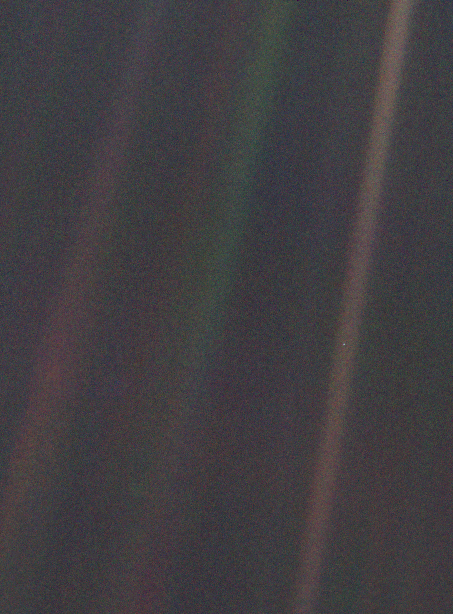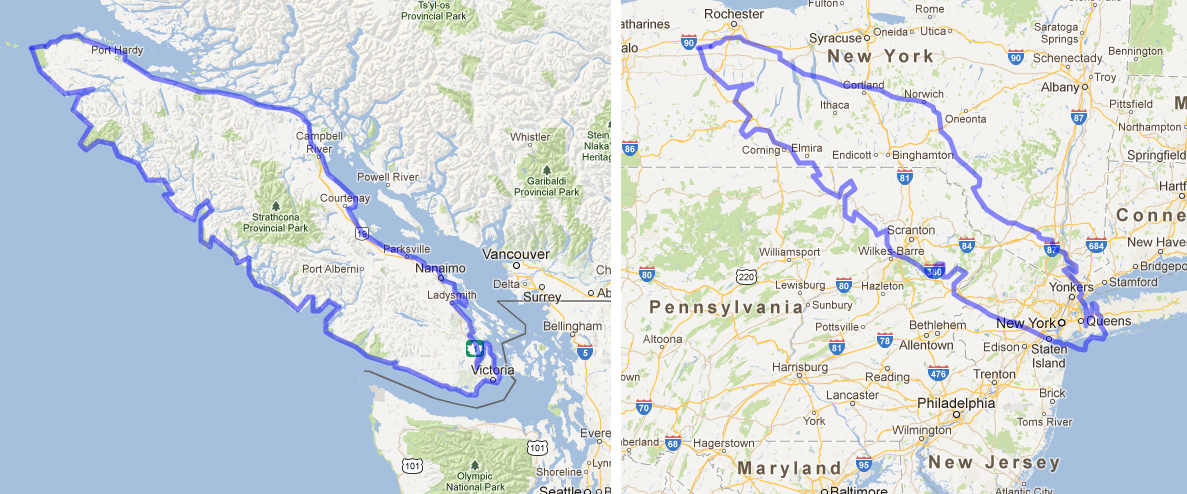Early this morning I learned that NASA’s Voyager 1 entered a “new realm” at the edge of the Solar System that they hadn’t anticipated or predicted existing. They’ve named this zone the “magnetic highway” and it’s basically the last layer of the Solar System before you enter interstellar space. They have no idea how long it will take Voyager 1 to pass through it, but they’ll know when it happens because of the data being sent back to Earth.
As I sat there groggy with my morning cup of tea, I thought back on that for a moment. We’re still actively receiving data from Voyager 1? How long does it take now? I MUST learn more!
So off I go down the rabbit hole looking up the history and timeline of Voyager 1. Being about the same age as Voyager 1, I knew much of its story, but today I learned there was a lot about Voyager 1 that I didn’t know and this shocked me.
First, I didn’t know about the “Family Portrait“. This is literally a portrait of all the planets in the Solar System taken by Voyager 1 from approximately 6 billion kilometers from Earth on February 14, 1990. These were the last photos that Voyager 1 took.
But what melted my heart was that Carl Sagan was responsible for this. It was Carl Sagan who twisted the arms of NASA, campaigning for many years, to make sure this photo got taken.
Carl Sagan was a man of many titles, astronomer and author being two, and he’s one of my favourite people. He coined the term “Pale Blue Dot”, a term that refers to the Earth from the vantage of outer space. What I didn’t know until this morning was that it was this very photo of the Earth, taken during the Family Portrait, that he was referring to as the Pale Blue Dot the whole time. I had never seen the original image until this morning:
Did you see that pixel of blue?
That’s Earth.
The photo puts everything into perspective, and with the world the way it’s going, I can’t help but think that the world needs a little bit of Carl Sagan’s wisdom right now.
From this distant vantage point, the Earth might not seem of any particular interest. But for us, it’s different. Consider again that dot. That’s here. That’s home. That’s us. On it everyone you love, everyone you know, everyone you ever heard of, every human being who ever was, lived out their lives. The aggregate of our joy and suffering, thousands of confident religions, ideologies, and economic doctrines, every hunter and forager, every hero and coward, every creator and destroyer of civilization, every king and peasant, every young couple in love, every mother and father, hopeful child, inventor and explorer, every teacher of morals, every corrupt politician, every “superstar,” every “supreme leader,” every saint and sinner in the history of our species lived there – on a mote of dust suspended in a sunbeam.
The Earth is a very small stage in a vast cosmic arena. Think of the rivers of blood spilled by all those generals and emperors so that in glory and triumph they could become the momentary masters of a fraction of a dot. Think of the endless cruelties visited by the inhabitants of one corner of this pixel on the scarcely distinguishable inhabitants of some other corner. How frequent their misunderstandings, how eager they are to kill one another, how fervent their hatreds. Our posturings, our imagined self-importance, the delusion that we have some privileged position in the universe, are challenged by this point of pale light. Our planet is a lonely speck in the great enveloping cosmic dark. In our obscurity – in all this vastness – there is no hint that help will come from elsewhere to save us from ourselves. The Earth is the only world known, so far, to harbor life. There is nowhere else, at least in the near future, to which our species could migrate. Visit, yes. Settle, not yet. Like it or not, for the moment, the Earth is where we make our stand. It has been said that astronomy is a humbling and character-building experience. There is perhaps no better demonstration of the folly of human conceits than this distant image of our tiny world. To me, it underscores our responsibility to deal more kindly with one another and to preserve and cherish the pale blue dot, the only home we’ve ever known.
– Carl Sagan, Pale Blue Dot: A Vision of the Human Future in Space.





Gotta love a little inner space geek. I recently checked out “The Planets” series on Netflx. Worth checking out. They interview people about the family portrait at one point.
Thanks Brian, I’ll definitely check that out!
Every cat!
[…] couldn’t help but be reminded of Carl Sagan’s Pale Blue Dot. Better yet, Chris took notice, and wrote […]